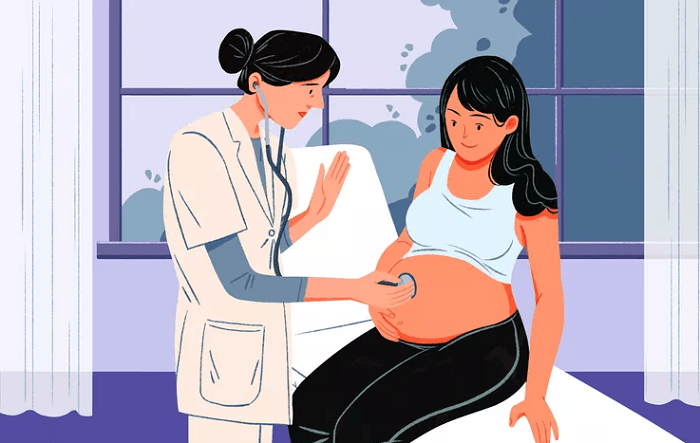Midwife DefinitionThe term 'midwife' has its origin in the Middle English language and translates to 'the woman who stays by the mother'. The general practices of midwifery commenced in the period of the Old Stone Age as there were no resources for the assistance of women during labor contractions and they had to learn the procedure of childbirth by perusing animals. 
Ancient AffairsThe ancient Indian traditions surrounding the proceedings of childbirth were considered deeply private and domestic. The elderly and experienced women from the family and close vicinity helped the birthing woman to sit in a kneeling position which is still considered an approved practice in certain tribal communities. During the 8th century B.C., in the age of classical antiquity, midwifery was known to be a highly respected and significant occupation consisting mostly of females who used herbs and roots to deal with female gestation. However, during the late 4th century B.C., the exceedingly patriarchal setup allowed mostly men to take part in midwifery practices and the physicians soon overshadowed them. 
In European countries, the 23rd century BCE observed the rising of women's empowerment in the branch of medicine for women. During the high medieval period, women associating with herbs and medicinal formulas were seen as blasphemous and reckoned as witches and burned at public stakes. In many Asian countries, the women were unprivileged and analphabetic women were assisting the pregnant women in proceeding for normal deliveries. Many influential families appointed elderly midwives for the lady. During the 17th century United States, Africans were brought to America for slavery. The black women worked as midwives in their own clans as well as the white women because most of them were prepared by the natives to serve them. However, in the 19th century, as the slavery abolishment act passed and with the rise of male physicians midwives were reduced to the strata of nurses and caretakers. Responsibilities of MidwivesAncient midwifery mostly dealt with childbirth and later, caretaking or babysitting. Modern midwives are known as Certified-Nurse Midwives. The CNM gets a degree of M.A. in midwifery and does proficient work not only in child supervision but also for women from puberty, pregnancy, postpartum stress, and menopause. The process of pregnancy and the experience of going through labor is known to be very stressful for a mother and the midwife assists the new mother along the way as a specialist. They mostly provide medications to help with the pain. 
95% of the deliveries in hospitals are carried out by midwives while 5% assist at birth centers. Most women chose to be accommodated by midwives because these are the nurses which are coached in one particular field and that is by providing professional support to the woman and the child's health. The gynecologist basically deals with the female reproductive system, hormonal dysfunction, and diseases; the doctors aid the pregnant woman based on monthly checkups and the condition of a fetus for almost 8 months. On the other hand, the midwife provides emotional support to the woman by answering questions about self-care during and post-pregnancy, food that would be best suited for the child, and how to deal with side effects and allergies. After how many months a mother should start exercising? How to handle mood swings? All these questions could be answered by the midwife and she assists the mother and child till the mother feels confident and natural with her child. Mostly during childbirth if the midwife is present, the delivery of a baby takes place normally and cesarean could be avoided. Doctors in many developing countries support and even recommend to their patients of appointing a midwife during pregnancy. Midwifery in IndiaThe midwives proved to manage 85% of necessity aftercare required by a mother and a newborn. The profession of midwife is not just based on attaining medical professionalism with their patient. It is a philosophical process as giving birth is the most natural yet complicated process which needs extreme mental strength. The midwives also provide the management of contraceptive medications and devices if requested and also assist in pediatric care. Midwifery or obstetrics is a vocation where the patient and nurse share mutual respect and understanding for one another to go through this complicated process . The concept of midwives had been a part of ancient Hindu texts and scriptures, especially in Ayurveda. The texts such as 'Sushruta-samhita' and 'Chakra-samhita' were written by scholarly physicians who served in the court of Krishna Gupta. They conducted thorough studies on female anatomy, menstruation, female reproduction, antenatal care, and abnormal labor in the 2nd century B.C. Obstetric accessories such as Yoni Vraneksana Yantara, Yantara satak, and uterine syringes were used by accoucheurs around the Vedic period (4000 years B.C.). Even the diseases such as kuhumaka and parugarbhika or marasmus were studied by Sushruta. In the modern-day world, the term midwife is associated with the woman who is only needed till the baby is born. This is the misconception of the general public that let us know how little we know about this traditional occupation. For a long time, traditional midwives have been assisting women during childbirth in villages with little to no health facilities. The practices of 'dais' in the mid-19th century were considered fatal due to the high infant and maternal mortality rate and the Britishers also chastised traditional midwifery. The British colonizers tried to bring contemporary and western medications and cures to India. However, the Indians were devoted to their aboriginal beliefs and disregarded the imported customs, in the starting at least. Alternatively, medical practitioners were getting galvanized by European trends and women were getting equal opportunities in the therapeutical branch as men. The women who learned medical science overseas agreed with switching the midwives with clinically trained nurses and doctors. The indigenous midwives lost their only source of economy and had to bear with being seen as orthodox grannies. The government has now commenced the latest programs to familiarise midwives with modern-day maternal care. However, most midwives prefer their customary methods and rituals over the enforcement of the changing world. Still, many NGOs and social services are looking out for midwives to keep the native values existent. Career in MidwiferyFor working as a professional midwife, the Indian government imparts diploma courses for training in Nursing and Midwifery. There are two types of nursing courses for students:
This training scheme mostly instructs the nurses regarding women's health care procedures and post-childbirth observation of the child as well as the mother. If the pregnancy includes any complications, the doctors and gynecologists are suggested for consultation though the midwives could assist during normal deliveries. For basic check-ups, midwives could be consulted or hired, and also to keep accurate records of patient's health history and sexual health
Next TopicNatural Disaster Definition
|
 For Videos Join Our Youtube Channel: Join Now
For Videos Join Our Youtube Channel: Join Now
Feedback
- Send your Feedback to [email protected]
Help Others, Please Share










